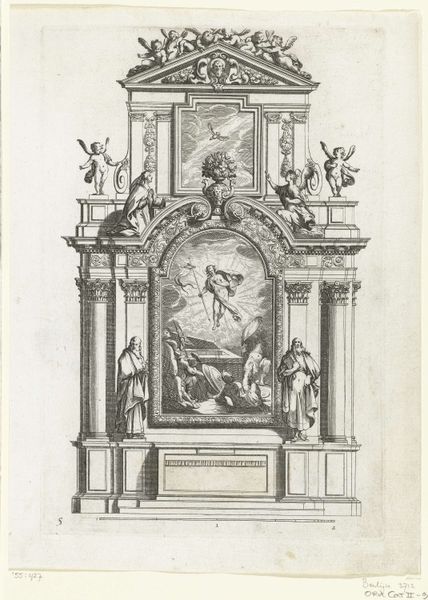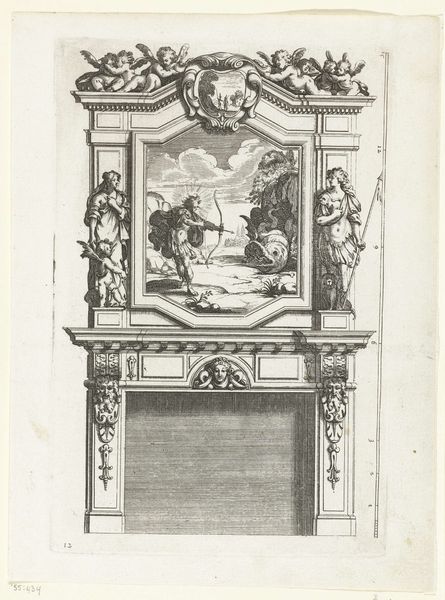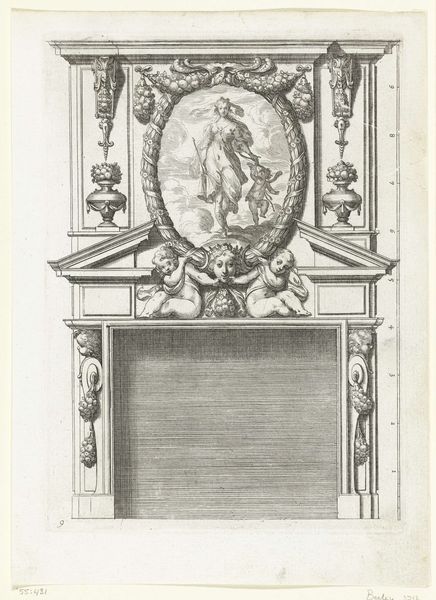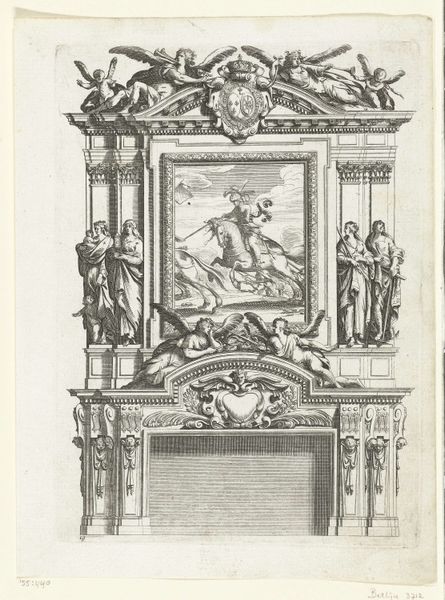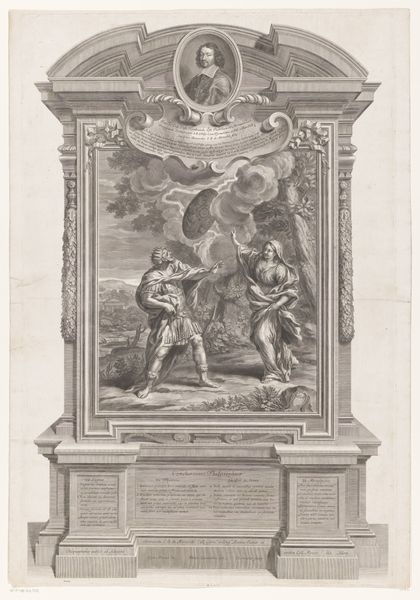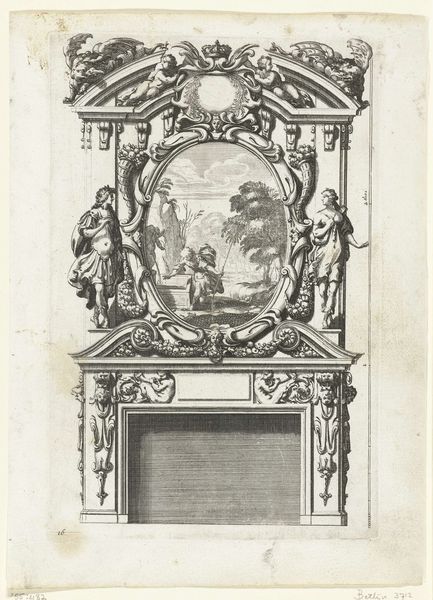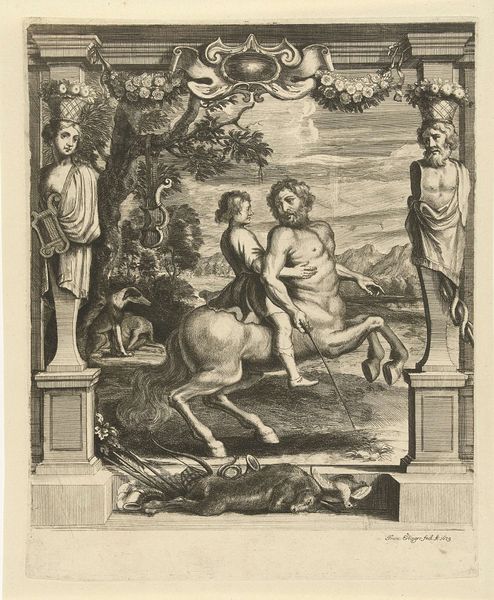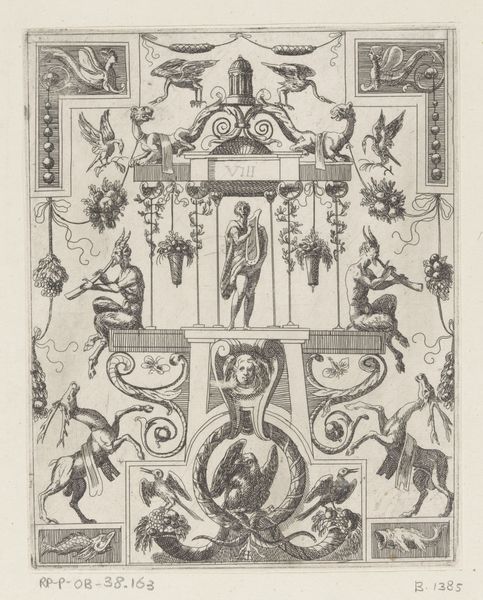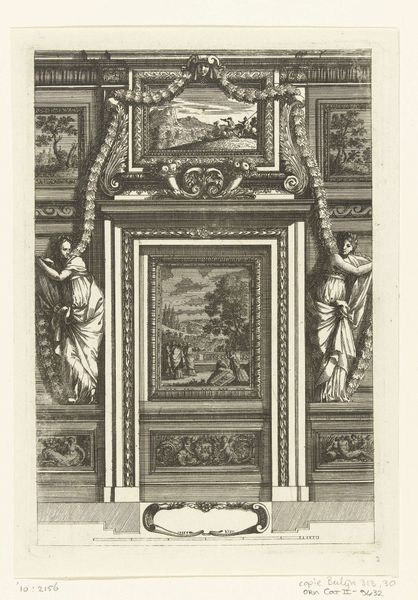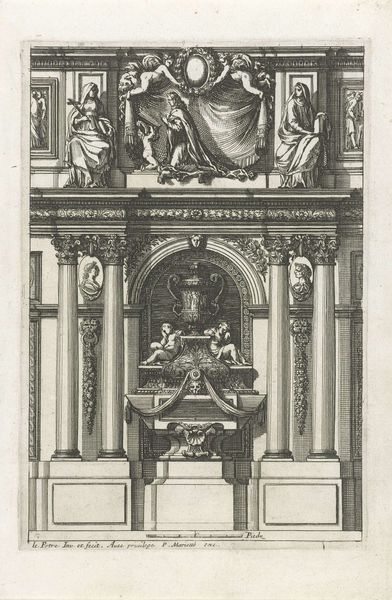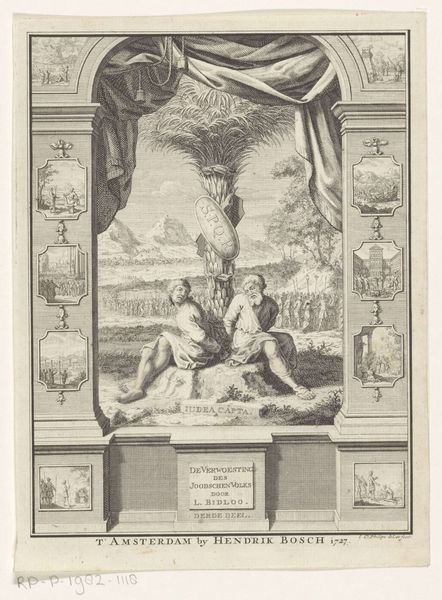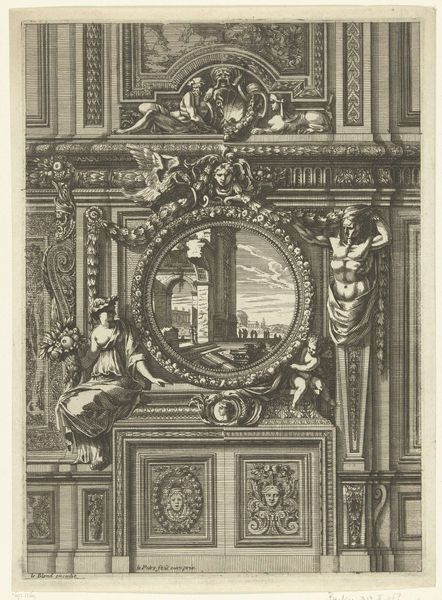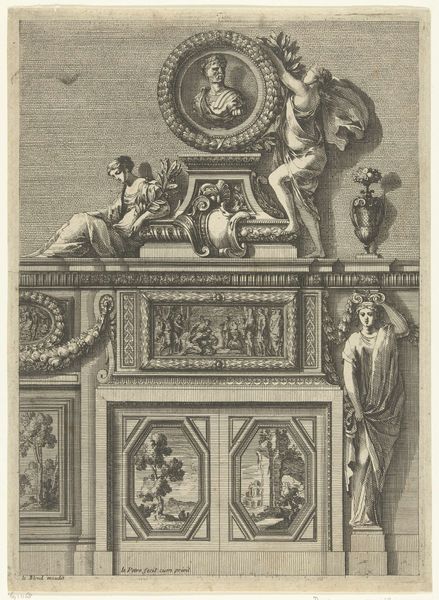
engraving
#
allegory
#
baroque
#
landscape
#
figuration
#
line
#
history-painting
#
nude
#
engraving
Dimensions: height 206 mm, width 130 mm
Copyright: Rijks Museum: Open Domain
Editor: This engraving, titled "Onderboezem, schacht gedecoreerd met Fortuna," was created before 1643 by Abraham Bosse and it's currently held at the Rijksmuseum. At first glance, I'm struck by the central figure – Fortuna, seemingly balanced on a globe amidst a turbulent sea. What do you make of this piece? Curator: It is quite fascinating, isn’t it? Note how Fortuna, the Roman goddess of fortune, stands precariously on that sphere. Consider what that symbolizes. How do you interpret her positioning in relation to the ships tossed about in the background? It is the ultimate depiction of the capricious nature of fate, isn’t it? Editor: I see what you mean! The sea looks pretty unforgiving, and she seems so vulnerable standing there. I hadn’t considered how unstable the image itself felt. Why place her on top of a fireplace? Curator: The fireplace was a popular and important status symbol at the time. What, then, would be implied by linking that which provides the essential functions to the vicissitudes of chance, represented here by the nude personification of Fortuna herself? I propose it illustrates that even life’s essential functions are subjected to random fortune. The image's purpose, then, becomes clear: to contemplate Fortune and accept her random benefits or misgivings, while one warms by the hearth. Editor: That really shifts my understanding of the whole composition. I initially saw it as just a decorative design, but you've shown me the image speaks to some of the inherent randomness in life itself. Curator: Precisely! And through understanding the symbolic language, the historical moment imprints upon us with great relevance. We've unearthed layers of meaning encoded within the seemingly simple lines of this engraving.
Comments
No comments
Be the first to comment and join the conversation on the ultimate creative platform.
